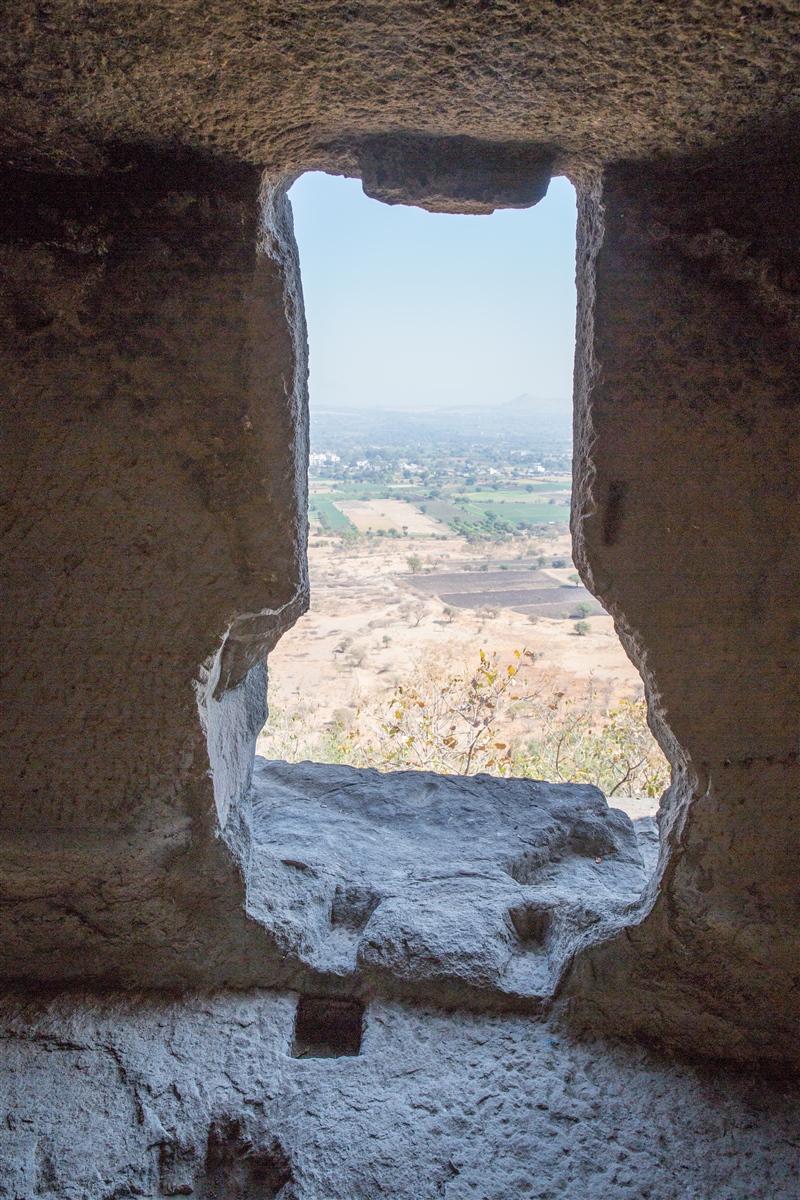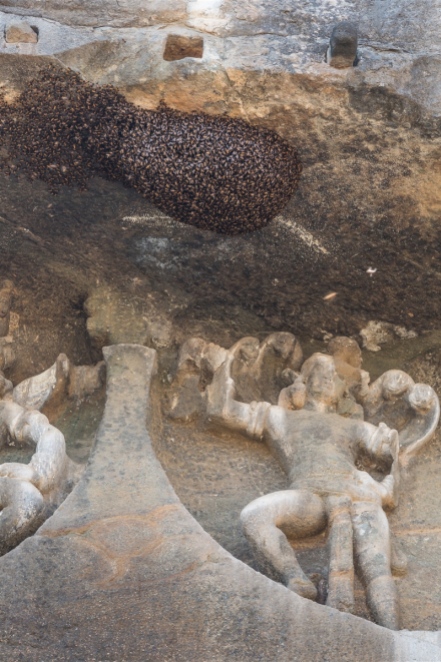
The Junnar region in Maharashtra has the largest number of rock-cut caves in India, numbering over 200 independent excavations and spread over the four hills. All the caves here belong to the Hinayana phase and are datable from mid 3rd century B.C. to late 3rd century A.D.
The presence of so many rock cut excavations with a large number of associated inscriptions (enabling paleographical study) makes Junnar a prominent site for the study of rock cut architecture in India.
Junnar group of caves are classified into various sub-groups depending upon the location of these excavations. They are:
- Tulja Lena – located on Tuljabai hill, 5 km west of Junnar.
- Manmodi – located on Manmodi hill to the southwest of the town. Here there are a further three distinct groups :
- Bhimashankar
- Amba-Ambika
- Bhutalinga
- Sivaneri – located southwest of the town
- Lenyadri (also known as Ganesh Lena) – located north of the town
My previous visit in 2016 to the Manmodi group of caves was a mixed experience. The light was rapidly fading, there was no signage, and coupled with warnings from locals of large bee populations and possible prowling leopards resulted in me only getting to see Amba-Ambika.
My return visit in 2017 was far more successful. Now knowing how to quickly get to Amba-Abika, I was able to traverse the hillside to the right (heading north west for 200m) and within 10 minutes I was at the caves that so alluded me a year ago.



Of the four Chaitya halls that exist in the Manmodi Cave group, the one at Bhutalinga Cave (also known as cave 40) os both the largest and most well-preserved. The facade is especially impressive, with a horseshoe arch over the entrance containing petal-shaped compartments filled with reliefs of Lakshmi, elephants and devotees.

This carving is shaped like a half lotus, the middle of which represents the calyx and the circle outside the stamen. Round the semicircle are seven petals. The carving of the seven petals is as follows. In the middle is a standing Lakshmi. On the right is a lotus and on the left a lotus leaf. Lakshmi wears a cloth like a waistcloth and in her ears are large ear-ornaments. Her left hand; rests on her hip and her right is raised in blessing. In the side petals elephants, standing on lotuses, throw water from jars held in their trunks, an ornament common in images of Lakshmi.
On one side of each elephant is a lotus leaf, on the other side a lotus bud and above the elephants a lotus. In the next petals on either side are standing male figures with thick armlets and large ear-ornaments and wearing the tasselled turban found on the heads of the male figures sitting on the elephants on the pillar capitals at Bedsa Each wears a dhotar and has his hands folded over his head. The attitude is almost as if dancing. On one side of each figure is a lotus bud and on the other side a lotus flower. In the last petal on either side women, in the same dancing attitude as the men, wear thick bracelets, large ear-ornaments, a necklace, a waistband, a waistcloth stopping at the knee, and rings on the legs.

In the half circle representing the calyx of this carving is an inscription, which has been translated as :
“The meritorious gift of an inner doorway by the Yavana Chanda.”

The finial of the arch is flanked with relief stupas as well as a winged animal-headed figure on the left, and a naga deity on the right.

The carving to the right is a standing lifesize Nagaraja with a fly-flap in his right hand, and his left hand resting on his hip. He wears a waistcloth, a bracelet, and an armlet. In his ears are large ear ornaments, on his head is a tasselled turban, and round the head are five snake hoods.
To the left a similar lifesize figure stands like the first with a fly-flap in his right hand. His dress and ornaments are the same as those on the right. He differs from the first in having wings and as on his turban appears the head of Garuda this is apparently a figure of Garuda. The cobra king and the vulture were probably chosen to show that they have laid aside their natural hate to join in the worship of Buddha.

Inside the Chaitya is a perfectly preserved stupa.


As forewarned over a year ago, there were certainly bees around. But for whatever reason they weren’t active and I hardly noticed them (although you could certainly hear them!).
I did find another inscription at the Bhutalinga Caves, but sadly I’ve been unable to find a translation on the internet, and what exists is now quite badly weathered.

To the left of the Chaitya are some other caves/cells worth exploring. This complex is relatively small and should only take 30-60 minutes to experience, depending on how fascinated you are by such places 🙂

The carving above appears to show a Bodhi tree. Garlands hang from it and above the tree an umbrella is shown raised on a double plinth. A flying human figure on the left comes towards the tree but it is unfinished.







Click here for instructions on how to successfully see all three cave complexes on Manmodi Hill in a single visit.
My thanks to Rashmi Gajare for coming along on day adventure out of Pune 🙂
Please ‘Like’ or add a comment if you enjoyed this blog post. If you’d like to be notified of any new content, just sign up by clicking the ‘Follow’ button.
If you’re interested in using any of my photography or articles please get in touch. I’m also available for any freelance work worldwide, my duffel bag is always packed ready to go…
KevinStandage1@googlemail.com
Categories: Bhutalinga Caves, India, Maharashtra








Fascinated I am! by the Bodhi tree and the Gajalakshmi on the entrance arch.I think it is one of the earliest Gajalakshmi in the Deccan.
LikeLiked by 1 person
Thanks for showing such amazing and rare views. I hope you would not mind if I save some of these pics for my studies.
LikeLiked by 1 person
No problem, but if you do use them please ensure a suitable credit etc. Glad to have helped !
LikeLike
इसको पढ़ने व देखने के बाद समझने पर मालूम चलता है कि ब्राह्मणों ने बुद्धिज्म को तोड़ मनोड़ कर हिन्दू धर्मो का प्रचार प्रसार किया है। ए सजननो दुर्जनो को छोड़ो और अपनी मूलनिवासियो के इतिहास को बचाने हेतु एकजुट होकर आगे आये व अपनी धरोहर को बचाएं।
और किसी बात को मानने से पहले उसे अपनी बुद्धि के तर्क वाली कसौटी पर जरूर कसे।
LikeLike